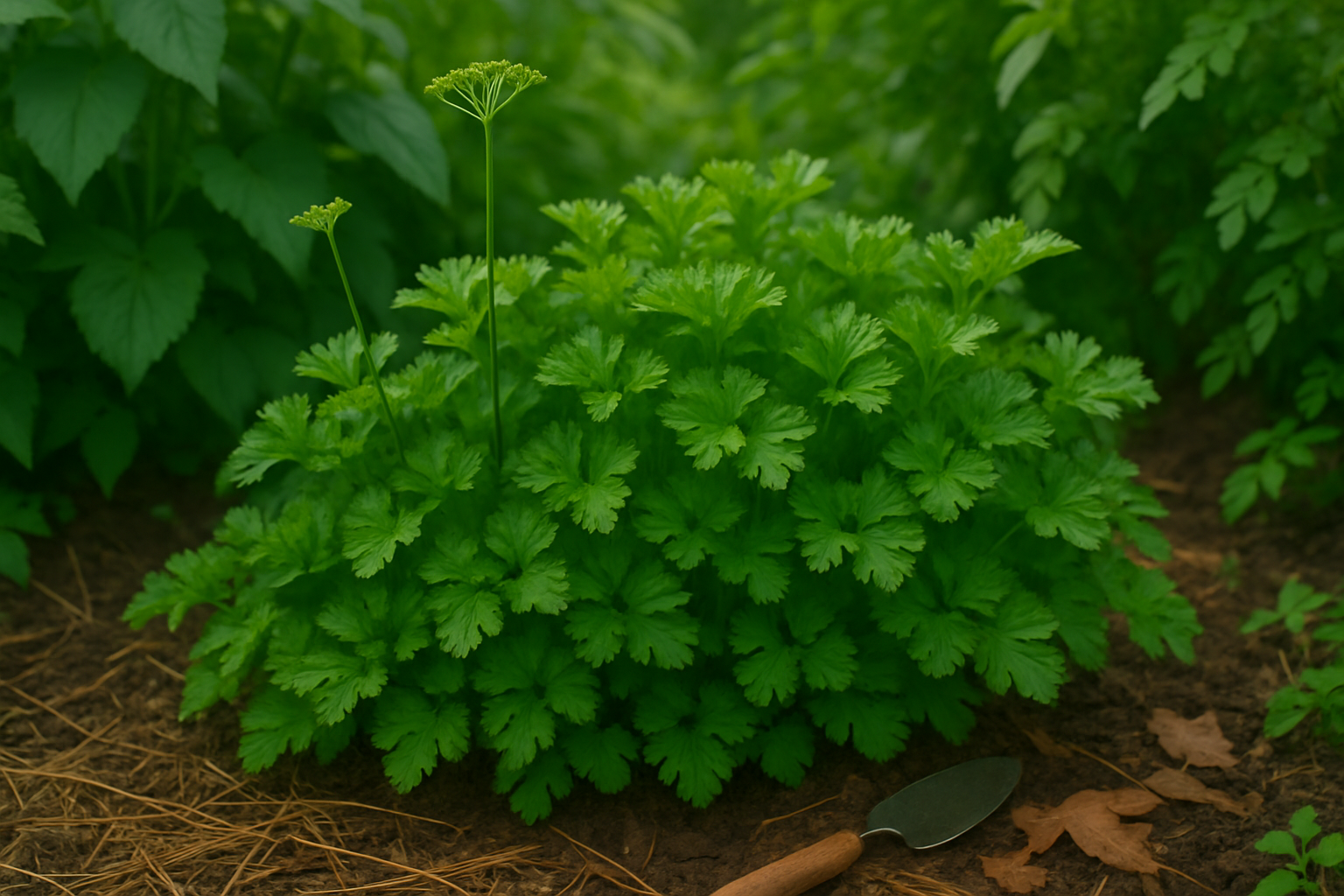Understanding Why Parsley Bolts
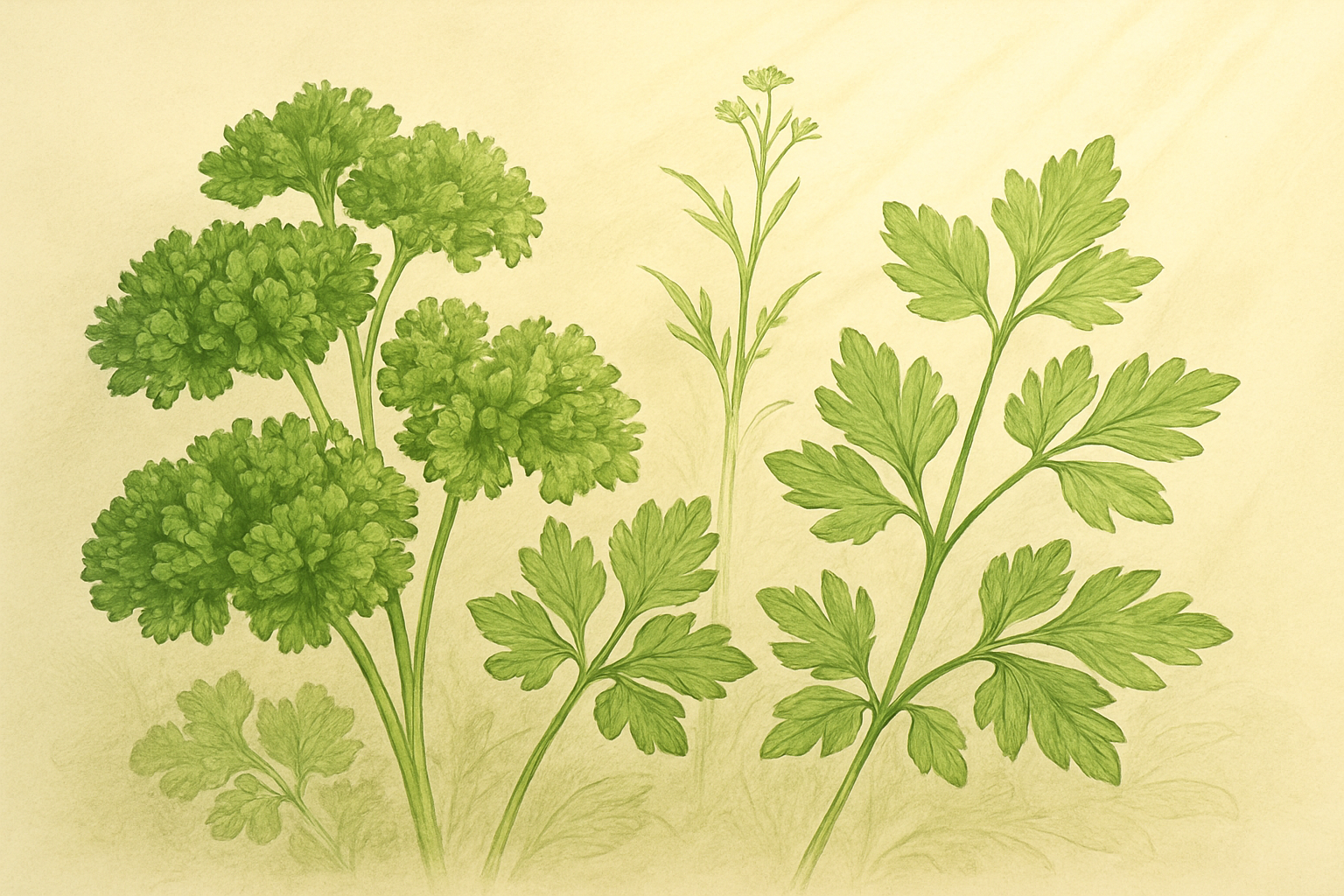
Bolting in parsley refers to the rapid growth of a flower stalk, signaling that the plant is shifting its energy from leaf production to seed formation. For gardeners, this is frustrating because bolting causes parsley leaves to turn bitter, lose their tender texture, and ultimately end the harvest window.
Several environmental triggers play a role in this process. High temperatures, particularly those above 75°F (24°C), commonly cause parsley to bolt, especially when combined with long daylight hours in late spring and summer. Sudden heat waves or an early start to summer can push parsley to flower ahead of its natural schedule. Daylight length is another important factor—when days grow longer, the plant perceives this as a cue to reproduce, prompting premature flowering even in otherwise healthy plants. Additionally, the maturity of the plant matters; older parsley, regardless of weather or sunlight, will eventually want to set seed as part of its natural lifecycle.
Understanding parsley’s growth habit is also crucial. There are two main types: curly-leaf (Petroselinum crispum var. crispum) and flat-leaf or Italian parsley (Petroselinum crispum var. neapolitanum), and both are classified as biennials. In practice, parsley spends its first year growing leafy tops and stores energy in its roots, then usually bolts during its second year. However, when grown in hot climates or under stress, parsley may behave more like an annual and flower within the first year.
Some gardeners routinely sow new parsley each season to ensure a steady crop, while others choose bolt-resistant cultivars or grow parsley in partially shaded spots to delay bolting. By understanding these triggers and growth patterns, you can better manage your parsley patch and stretch out the season for flavorful, harvest-ready leaves.
If Parsley Bolts
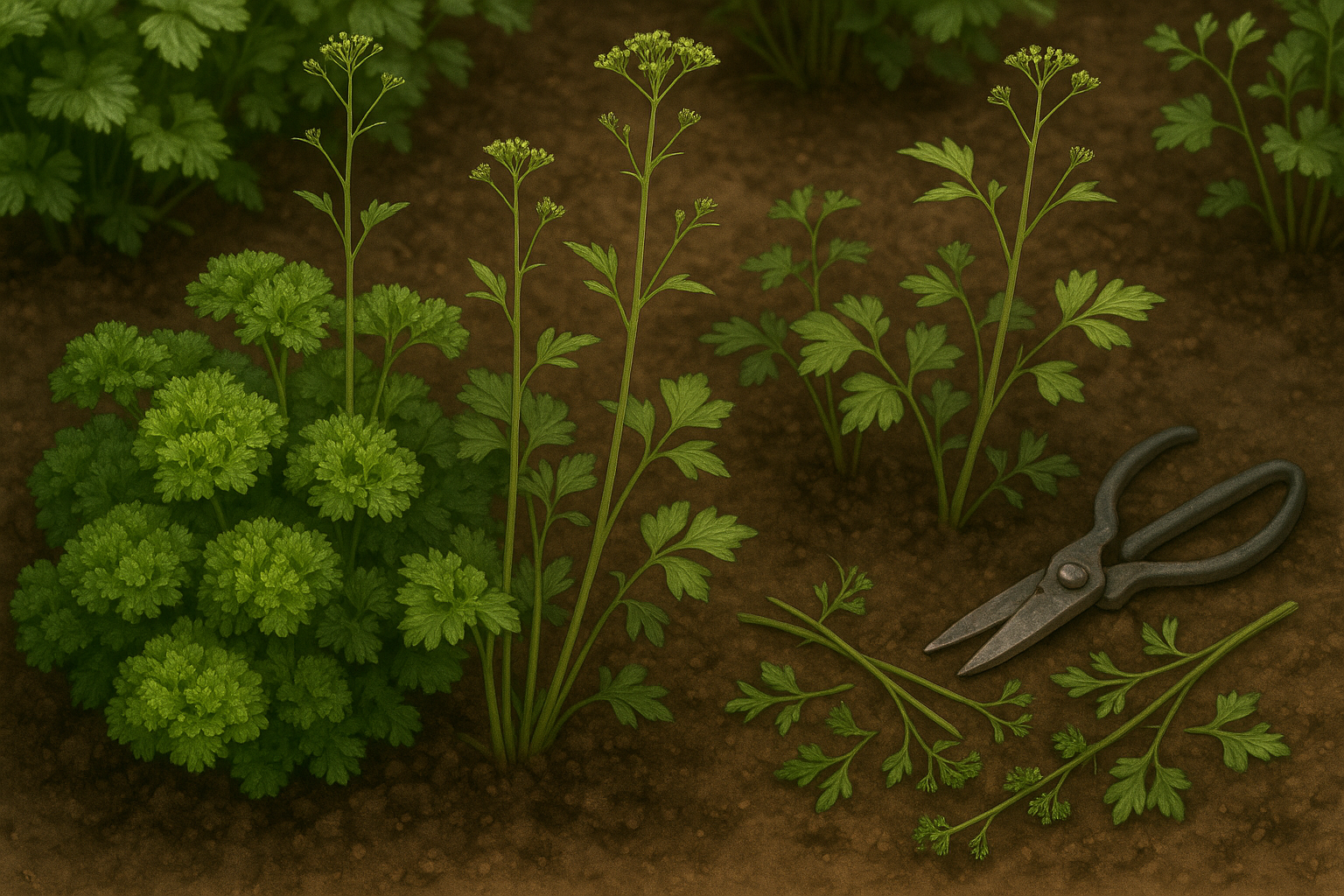
When parsley begins to bolt, you’ll notice slender flower stalks shooting up from the center of the plant, often much taller than the regular leafy stems. The leaves may start to look finer, more feathery, or curlier than usual, and the plant overall may appear leggier.
Bolting is a natural part of parsley’s lifecycle when it starts to flower and go to seed, usually triggered by warm weather or longer daylight. Once you spot these signs, act quickly if you want to prolong your parsley harvest.
Snip off any emerging flower stalks as soon as you see them; this can slow down the bolting process, encouraging the plant to put energy back into leaf production. However, understand that once bolting starts, it’s difficult to fully reverse.
You can still use the leaves from a bolting plant, but keep in mind the flavor changes—bolted parsley usually becomes more bitter and less sweet, making the leaves less desirable for dishes that require a fresh, mild flavor. Instead, try using bolted parsley in cooked recipes such as stocks, soups, or stews, where the stronger flavor can blend in or cook out.
You can also let one or two plants go to seed intentionally—these will attract pollinators to your garden and give you a head start on parsley seeds for next season.
By recognizing the signs of bolting early and knowing how to use the changing leaves, you can make the most out of every parsley plant in your garden.
Best Practices for Growing Parsley to Prevent Bolting
One of the most effective ways to prevent parsley from bolting—prematurely sending up flower stalks and going to seed—is to create the right growing environment from the start. Parsley thrives in cool temperatures, ideally between 50°F and 70°F. When summer heat pushes temperatures much higher, the plant shifts into reproduction mode and bolts quickly, so aim to sow seeds early in spring or, in warmer climates, late summer for a fall crop.
Choose a spot that gets morning sun and dappled afternoon shade, as too much direct sun can encourage bolting. Parsley prefers rich, well-drained soil and consistently moist conditions, but it hates soggy feet. Water deeply once or twice a week, making sure the soil stays evenly damp—mulching around the base can help retain moisture and keep soil temperatures stable.
When it comes to varieties, look for slow-bolting cultivars such as ‘Giant of Italy’ or ‘Flat Leaf Dark Green’ if your region has hot summers; these have been bred to tolerate heat or sudden weather changes better, helping extend your harvest.
Additionally, avoid transplant shock by starting seeds directly in their final growing spot, since parsley grows a long taproot and doesn’t like being disturbed. Finally, harvest leaves frequently and keep the plant well-fed with gentle organic fertilizer; regular picking not only gives you fresh herbs but also signals the plant to keep producing leaves instead of flowers.
By following these simple guidelines, you’ll maximize your chances of a lush, long-lived parsley patch that resists bolting for as long as possible.
Environmental and Care Strategies
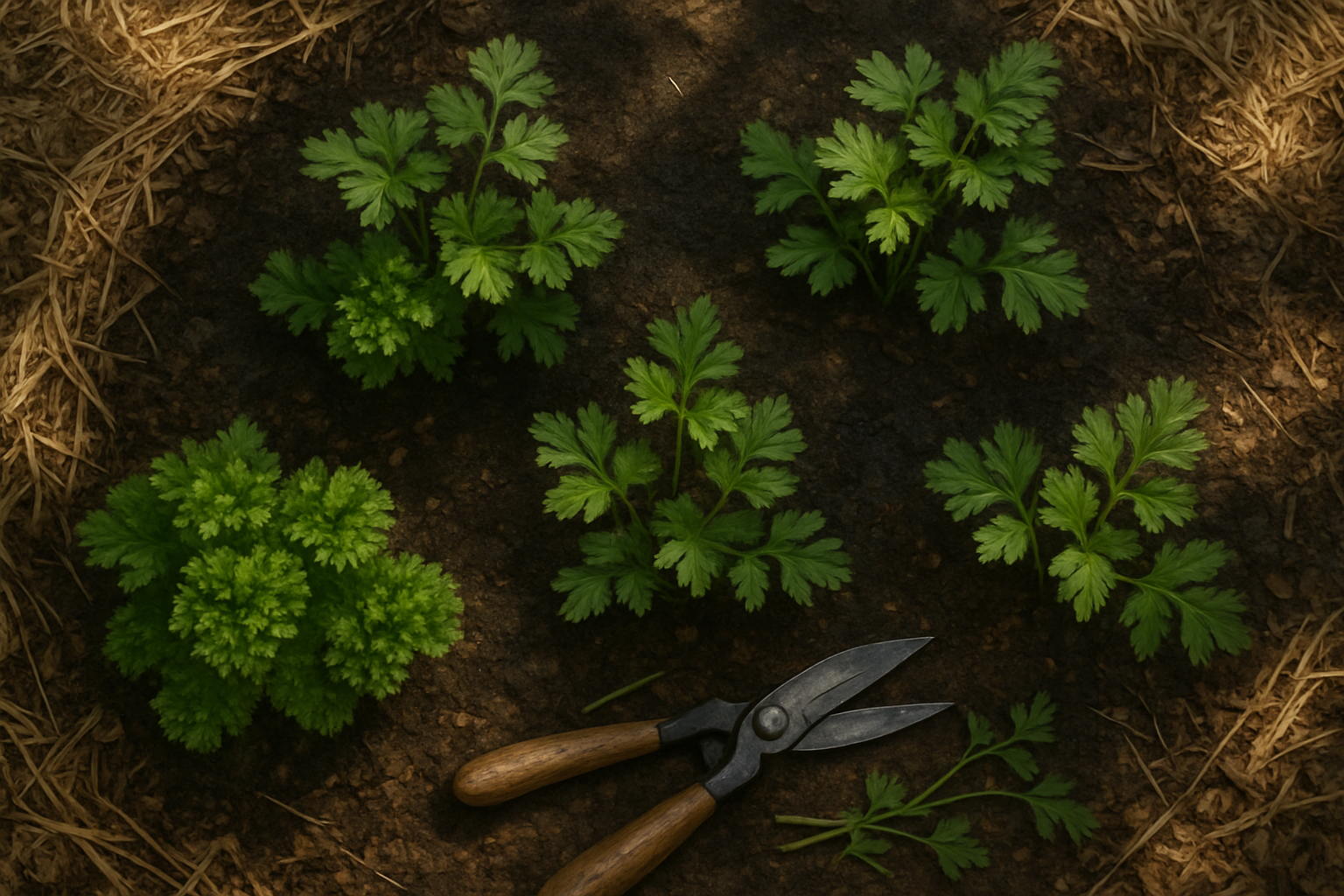
Keeping parsley roots cool is key to healthy, flavorful growth, especially as temperatures rise. One simple method is to apply a layer of organic mulch—like straw, shredded leaves, or compost—around the base of the plants. Mulch acts as a natural insulator, conserving soil moisture and shielding roots from direct heat.
If your garden gets full sun, consider using shade cloth or planting taller companions nearby to provide dappled shade during peak afternoon hours. Watering deeply but less frequently encourages roots to grow downward where it’s cooler; aim to keep soil consistently moist but avoid soggy conditions that can cause root rot.
Regular harvesting and pinching back outer leaves not only supply your kitchen with fresh parsley but also help prevent the plant from bolting—that is, prematurely sending up a flower stalk and turning the leaves bitter. Bolting is often triggered by stress such as overcrowding, infrequent watering, or hot spells, so thinning seedlings to ensure at least 6 inches of space between plants is crucial. Don’t be afraid to remove smaller, weaker plants early on.
To minimize stress, water during the cooler parts of the day and consistently check soil moisture. If you notice plants starting to stretch or new growth slowing, take that as an early sign to harvest more aggressively or gently pinch back the top foliage. By combining these environmental and care strategies, you’ll create optimal growing conditions and enjoy lush parsley for longer into the season.
When Bolting May Be Beneficial
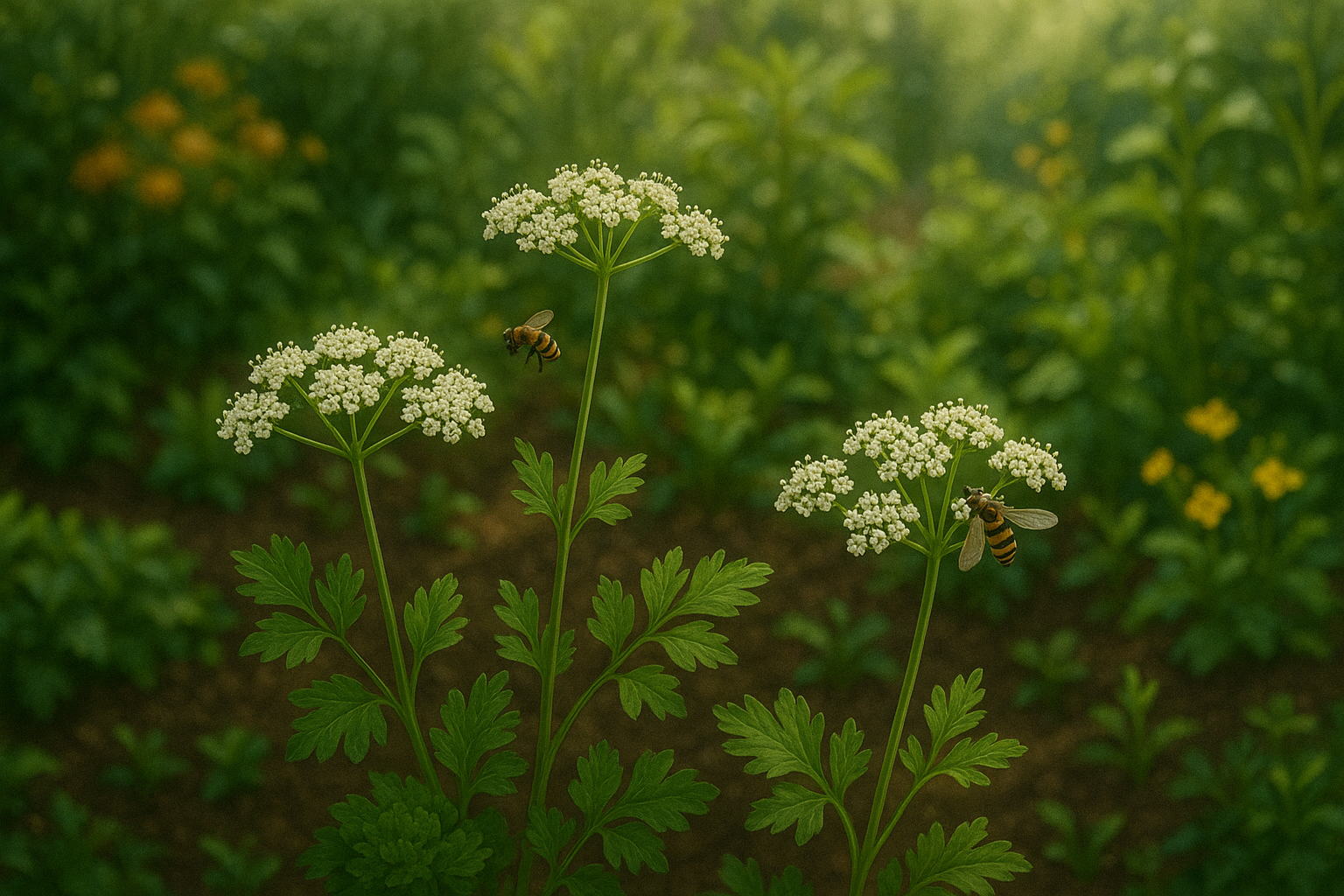
Allowing parsley to bolt—when it sends up flower stalks and goes to seed—can actually be a smart move, depending on your gardening goals. If you want to save seeds for next season, let a few healthy parsley plants flower and set seed. Once the flowers dry out and turn brown, snip off the seed heads and gently crush them over a paper towel to collect the small, oval seeds. Store these in a cool, dry place for planting later.
Bolting parsley is also a win for your garden’s mini-ecosystem: the tiny clusters of white flowers attract pollinators like bees, butterflies, and beneficial insects such as hoverflies. These visitors help pollinate other crops and keep pest numbers down naturally.
By letting some parsley plants finish their full life cycle, you boost biodiversity, support local wildlife, and create a richer, more resilient garden environment. So while many gardeners rush to harvest before bolting, don’t overlook the advantages of leaving a few plants untouched—your garden, and its critters, will thank you for it.
Summary and Quick Tips to Keep Parsley Productive
Keeping parsley from bolting starts with understanding its needs: this herb prefers cool temperatures, consistent moisture, and plenty of sunlight without intense summer heat. To keep your parsley lush and productive, water it regularly—especially during warm spells—to prevent stress, which can trigger early flowering.
Snip leaves often, starting from the outside, to encourage new growth and delay bolting. Mulch around the base to help retain soil moisture and keep roots cool. If you’re gardening in a hot climate, try providing light shade during the brightest part of the day.
Don’t be afraid to experiment with different locations or watering routines to see what works best in your garden. Every space is unique, and tweaking your approach based on your parsley’s response can make all the difference.
Consistent care and observation are your best tools for enjoying fresh, flavorful parsley all season long.
